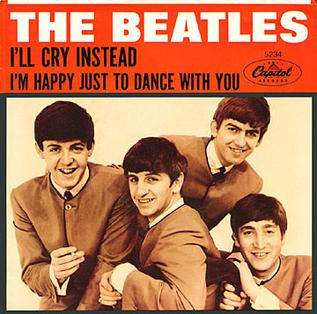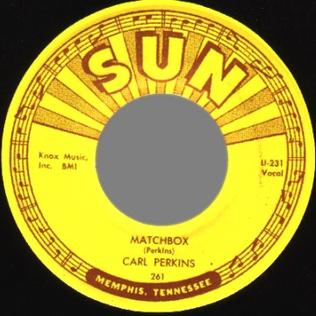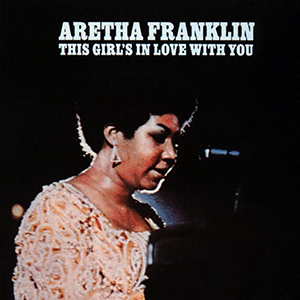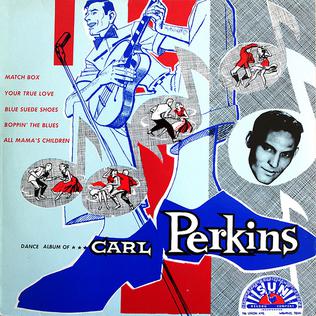This article needs additional citations for verification .(April 2021) |
"Red Hot" is a song written and recorded by Billy "The Kid" Emerson and released on Sun Records in 1955. It has been covered many times.
This article needs additional citations for verification .(April 2021) |
"Red Hot" is a song written and recorded by Billy "The Kid" Emerson and released on Sun Records in 1955. It has been covered many times.
Emerson recorded the song at the Sun Recording Studio in Memphis, Tennessee on May 31, 1955. Besides Emerson as vocalist, the Sam Phillips produced session included Calvin Newborn, guitar; Kenneth Banks, bass; Phineas Newborn, Sr., drums; Billy 'Red' Love, piano; Jewell Briscoe, tenor sax; and Moses Reed, tenor sax. The b-side for the release was another Emerson song, "No Greater Love".

Carl Lee Perkins was an American guitarist, singer and songwriter. A rockabilly great and pioneer of rock and roll, he began his recording career at the Sun Studio, in Memphis, beginning in 1954. Among his best-known songs are "Blue Suede Shoes", "Honey Don't", "Matchbox" and "Everybody's Trying to Be My Baby".

Rockabilly is an early style of rock and roll music. It dates back to the early 1950s in the United States, especially the South. As a genre, it blends the sound of Western musical styles such as country with that of rhythm and blues, leading to what is considered "classic" rock and roll. The term "rockabilly" itself is a portmanteau of "rock" and "hillbilly"; the latter is a reference to country music that contributed strongly to the style. Other important influences on rockabilly include western swing, boogie-woogie, jump blues, and electric blues.

Ronald Cornett Hawkins was an American rock and roll singer, long based in Canada, whose career spanned more than half a century. His career began in Arkansas, United States, where he was born and raised. He found success in Ontario, Canada, and lived there for most of his life. He was highly influential in the establishment and evolution of rock music in Canada.

"Honey Don't" is a song written by Carl Perkins, originally released on January 1, 1956 as the B-side of the "Blue Suede Shoes" single, Sun 234. Both songs became rockabilly classics. Bill Dahl of Allmusic praised the song saying, "'Honey Don't' actually outclasses its more celebrated platter-mate in some ways." It has been covered by more than 20 other artists, including the Beatles, Ronnie Hawkins and Johnny Rivers. The song has appeared in the films Prince of Tides, Diner, and Perfect Sisters.
"Everybody's Trying to Be My Baby" is a rockabilly song often credited to Carl Perkins. Based on a 1936 song written by singer/songwriter Rex Griffin, it achieved widespread popularity when it was released in 1957 by Perkins and covered by the Beatles in 1964.

"I'll Cry Instead" is a song written by John Lennon, and recorded by the English rock band the Beatles for their third studio album, A Hard Day's Night (1964), a part-studio and part-soundtrack album to their film of the same name (1964). In the United States, the song originally appeared in the US version of A Hard Day's Night before it was released as a single backed with "I'm Happy Just to Dance with You" along with the US album Something New.

"Slow Down" is a rock and roll song written and performed by Larry Williams. Recorded in 1957, AllMusic writer Stewart Mason describes it as "raucous enough to be punk rock nearly a full two decades before the concept was even in existence." Specialty Records released it as a single in 1958, but only the second-side "Dizzy, Miss Lizzy" reached the record charts. Both songs were later covered by the Beatles.

"Matchbox" is a song written and recorded by Carl Perkins and released in 1957. Blind Lemon Jefferson wrote and recorded a song entitled "Match Box Blues" in 1927, which is musically different but which contains some lyric phrases in common.

Warren Smith was an American rockabilly and country music singer and guitarist.
James "Osie" Johnson was a jazz drummer, arranger and singer.

This Girl's in Love with You is the sixteenth studio album by American singer Aretha Franklin, released on January 15, 1970 by Atlantic Records. It reached Billboard's Top 20 and was reissued on compact disc through Rhino Records in 1993. Her version of The Beatles' "Let It Be" was the first recording of the song to be commercially issued. Songwriter Paul McCartney sent Franklin and Atlantic Records a demo of the song as a guide.

Billy Lee Riley was an American musician, singer-songwriter, and record producer. His most memorable recordings include "Rock With Me Baby", "Flyin' Saucers Rock and Roll" and "Red Hot".
"Susie Q" is a rockabilly song co-written and performed by American musician Dale Hawkins released in 1957. The song was a commercial success, and became a classic of the early rock and roll era being recorded by many other performers in subsequent years.

William Robert Emerson, known during his recording career as Billy "The Kid" Emerson and more recently as Rev. William R. Emerson, was an American R&B and rock and roll singer and songwriter turned preacher, best known for his 1955 song, "Red Hot."
"Hallelujah I Love Her So" is a single by American musician Ray Charles. The rhythm and blues song was written and released by Charles in 1956 on the Atlantic label, and in 1957 it was included on his self-titled debut LP, also released on Atlantic. The song peaked at number five on the Billboard R&B chart. It is loosely based on 'Get It Over Baby' by Ike Turner (1953).
"Treat Her Right" is a soul music song, with a standard 12-bar-blues structure. Written by Roy Head and Gene Kurtz, it was recorded by Head and The Traits and released on the Back Beat label in 1965.

"Glad All Over" is a 1957 song recorded by rock and roll and rockabilly artist Carl Perkins, "The Rockin' Guitar Man", at Sun Records in 1957. It was released as a 45 and 78 single, Sun 287, on January 6, 1958. It was written by Aaron Schroeder, Sid Tepper, and Roy Bennett. It is not the same song as the single "Glad All Over" released in 1963 by The Dave Clark Five.
"Short Fat Fannie" is Larry Williams' second single release after "High School Dance". Williams' original penned track peaked at number five on the U.S. pop chart, and at number one on the R&B chart. It sold over one million records, Williams' first million seller.

"Sure to Fall (in Love with You)" is a 1955 song written by Carl Perkins, Bill Cantrell, and Quinton Claunch. It was recorded by Carl Perkins in December 1955 and was planned for release as the follow-up to "Blue Suede Shoes". Carl and Jay Perkins were on vocals. The song was not issued, however, as a single on the Sun Records label at that time. A test pressing was made. Sam Phillips circulated dubs or acetates to local radio stations of the proposed single. The Sun catalogue number was 235 backed with Perkins' song "Tennessee" on the B-side. The Sun master numbers assigned to the two sides were U 177 and U 178. Liner notes for the Rhino Records release of Carl Perkins' Original Sun Greatest Hits, however, listed the single as being issued at the time as 235DJ, available to disc jockeys only. The songs were released, however, on the 1957 Sun LP, Dance Album of Carl Perkins, 1225, re-released as Teen Beat; The Best of Carl Perkins in 1961. This album was also released in the UK on London as HA-S 2202, and is how the Beatles heard the songs. The song also appeared on Sun EP 115 released in 1961. Sun Records under Shelby Singleton did release a "Sure to Fall"/"Tennessee" single, Sun Golden Treasure Series, Sun 5, but it was in the late 1970s, when the Carl Perkins 45s were re-released.
"When It Rains, It Really Pours" is a song originally written and recorded by Billy "The Kid" Emerson. His version, titled "When It Rains It Pours", was released by Sun Records in 1954. The song was later recorded by Elvis Presley in 1957, but not released until 1965 on the album Elvis for Everyone.